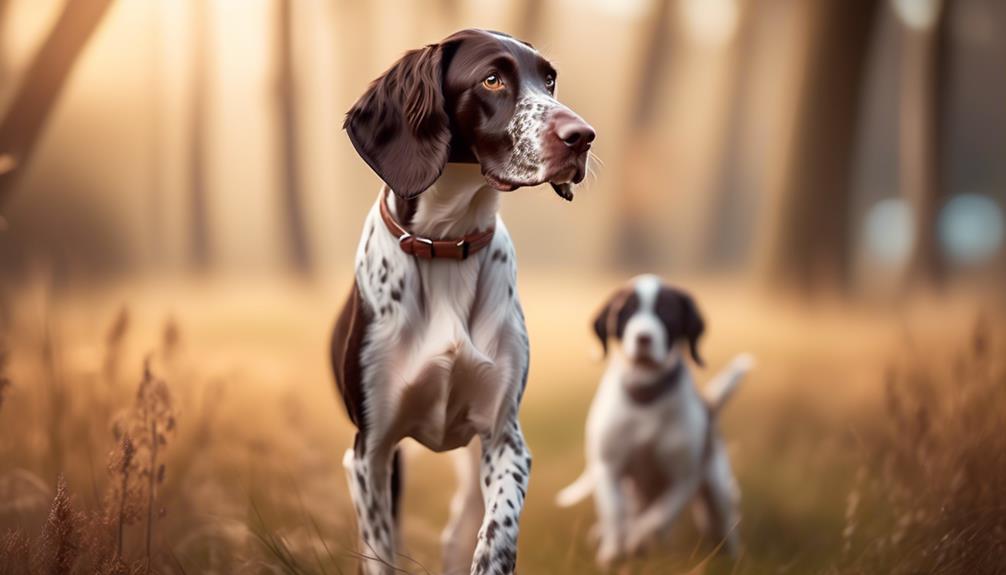
Are you searching for a canine companion that combines beauty, athleticism, and adaptability? Look no further than the Small Munsterlander Pointer.
With its distinctive coat patterns, muscular body, and expressive eyes, this medium-sized dog is sure to catch your attention. But what makes the Small Munsterlander Pointer truly special is its suitability for apartment living.
In this article, we will explore the breed characteristics, temperament, and history of the Small Munsterlander Pointer, as well as its adaptability in apartment environments. Get ready to discover why this breed may be the perfect fit for your apartment lifestyle.
Key Takeaways
- Small Munsterlander Pointers are medium-sized dogs with an athletic build and distinctive coat patterns.
- They can adapt well to apartment living as long as their exercise needs are met and they display polite behavior towards other residents.
- When choosing a dog for an apartment, size should not be the sole determinant, and energy levels and space requirements should be considered.
- Some breeds are not well suited to apartment living due to their size, energy levels, or propensity for frequent barking.
Breed Characteristics
The Small Munsterlander Pointer dog breed is known for its medium-sized, athletic build and distinctive coat patterns. With a muscular body, well-proportioned head, and expressive eyes, this breed exudes strength and intelligence.
Its dense, medium-length coat comes in liver and white or black and white, adding to its unique appearance. The Small Munsterlander Pointer has medium-sized ears that hang close to the head and a long, tapered tail. Its alert and intelligent expression showcases its keen senses and quick thinking.
These characteristics make the Small Munsterlander Pointer a remarkable breed that stands out both in terms of physicality and beauty.
See another Dog breed profile.
Soft Coated Wheaten Terrier Breed
Adaptability in Apartments
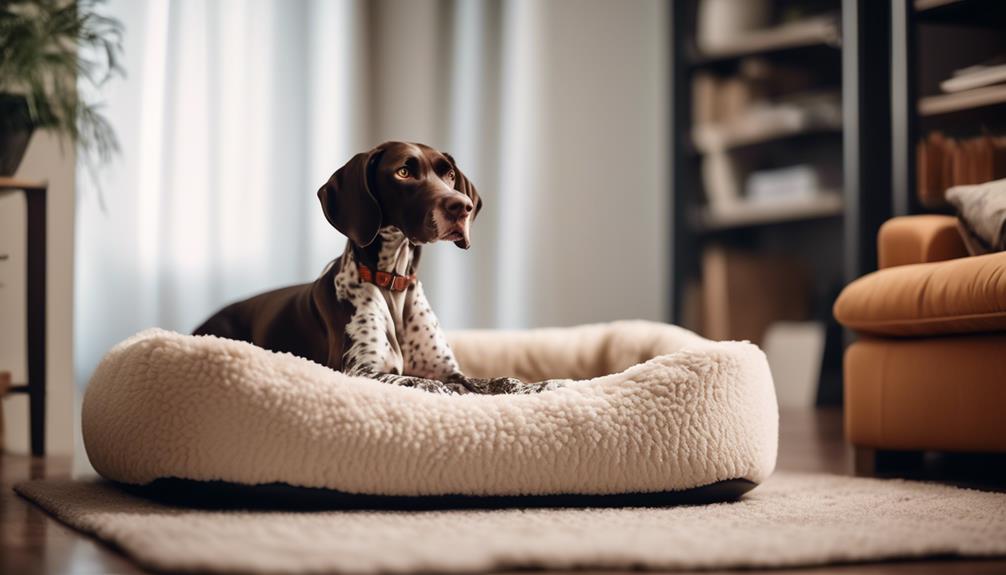
Now let’s explore how the Small Munsterlander Pointer dog breed adapts to living in apartments.
Small Munsterlander Pointers can adapt well to apartment living as long as their exercise needs are met. They’ve moderate energy levels and are content with indoor playtime or regular walks.
When living in an apartment, it’s important to consider their behavior around neighbors and shared spaces. Desirable qualities in an apartment dog include being quiet, low-energy, and displaying polite behavior towards other residents. However, some small dog breeds may not be suitable for apartment living due to their high energy levels and frequent barking.
When choosing a dog for an apartment, factors to consider include size, energy levels, and space requirements. Finding a dog that adapts well to apartment living creates a harmonious living environment.
Factors for Choosing an Apartment Dog
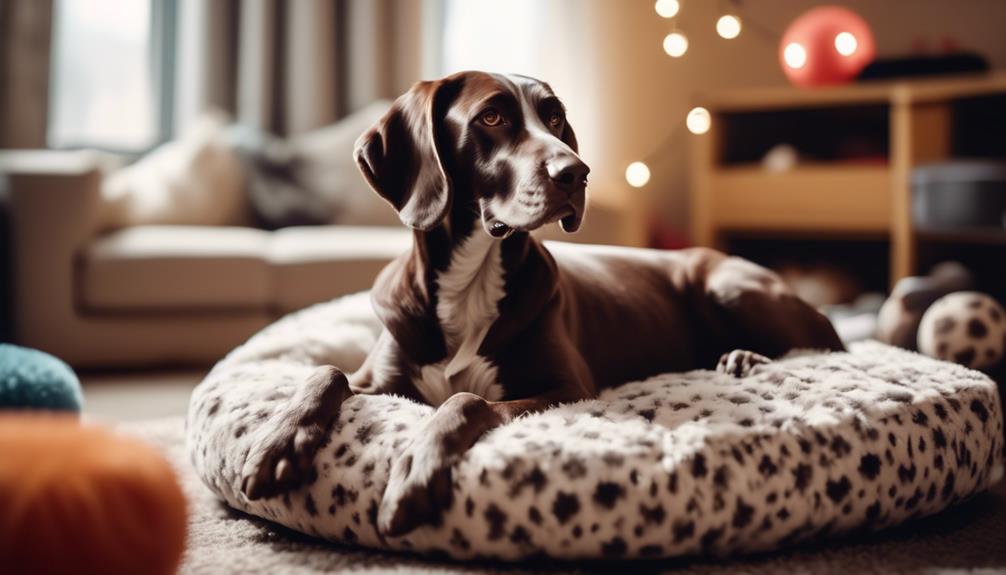
When choosing a dog for an apartment, consider factors such as size, energy levels, and space requirements. Size alone shouldn’t be the sole determinant, as small dog breeds with higher energy levels can still thrive in apartments with proper exercise and mental stimulation. Prioritize qualities such as being quiet, low-energy, calm indoors, and exhibiting good manners towards other residents.
Some dog breeds aren’t well suited to apartment living due to size, energy levels, or propensity for frequent barking. Breeds that require a lot of space and have high energy levels may not be suitable for smaller apartments. Dogs that excessively bark or exhibit anxious behavior may disrupt the harmony of apartment living.
Researching and understanding the characteristics of different breeds can help in finding a dog that’s well suited to apartment living.
Dogs Not Well Suited to Apartments
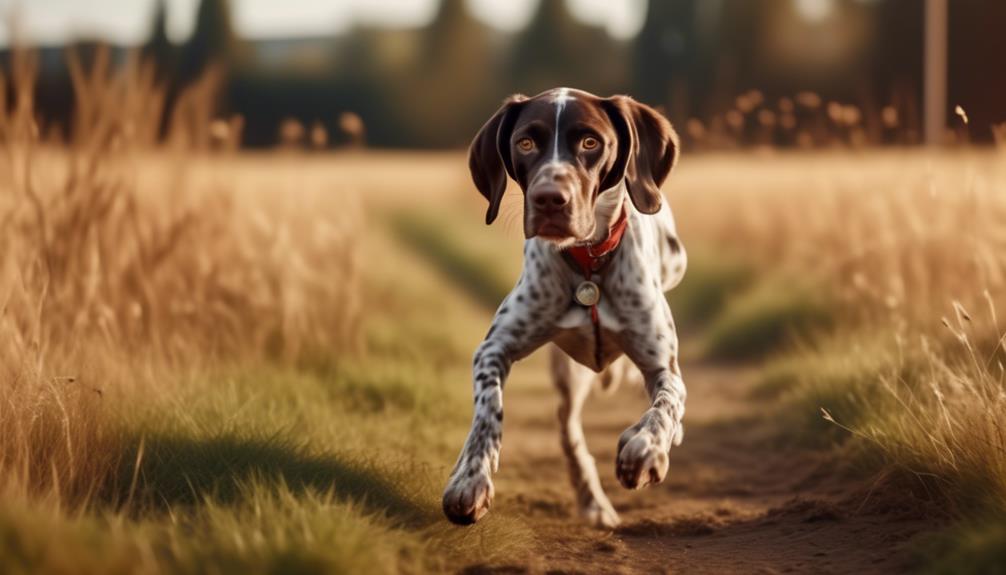
Certain dog breeds may not be well suited to apartment living due to their size, high energy levels, or tendency to bark excessively. It is important to consider these factors when choosing a dog for apartment living to ensure a harmonious living environment. Here is a table that outlines some breeds that may not be suitable for apartments:
| Breed | Size | Energy Level | Barking Tendency |
|---|---|---|---|
| Siberian Husky | Large | High | High |
| Border Collie | Medium to Large | High | High |
| Dalmatian | Large | High | High |
| Beagle | Small to Medium | Medium to High | High |
| Jack Russell Terrier | Small | High | High |
| Australian Cattle Dog | Medium to Large | High | High |
These breeds require a lot of space and physical exercise, which may not be suitable for smaller apartments. Additionally, their tendency to bark excessively can disrupt the harmony of apartment living. It is important to research and understand the characteristics of different breeds to find a dog that is well suited to apartment living.
All-around Friendliness
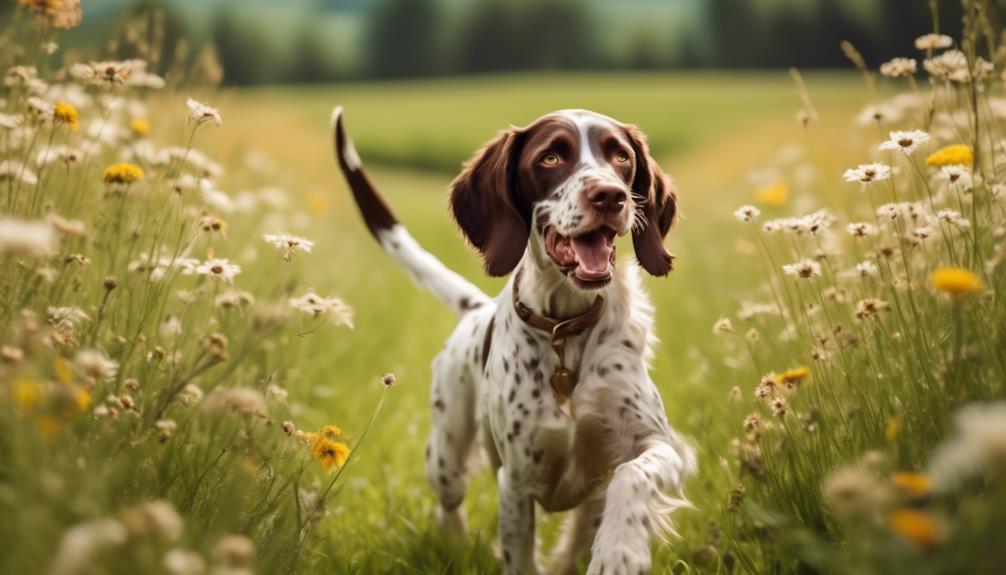
Small Munsterlander Pointer dogs are known for their all-around friendliness, displaying unwavering loyalty, affection, and a strong desire to be with their families. These dogs are incredibly loving and devoted, making them excellent companions. They thrive on human interaction and are happiest when they’re by your side.
Small Munsterlander Pointers are known for their affectionate behaviors, such as tail-wagging greetings and cuddling. They’ve a remarkable ability to sense their owners’ emotions and provide comfort and support during difficult times. With their friendly and gentle nature, Small Munsterlander Pointers are great with children and other pets. They’ve a strong bond with their families and will go above and beyond to ensure their happiness and well-being.
If you’re looking for a dog that will be your loyal and loving friend, the Small Munsterlander Pointer is an excellent choice.
Exercise Requirements
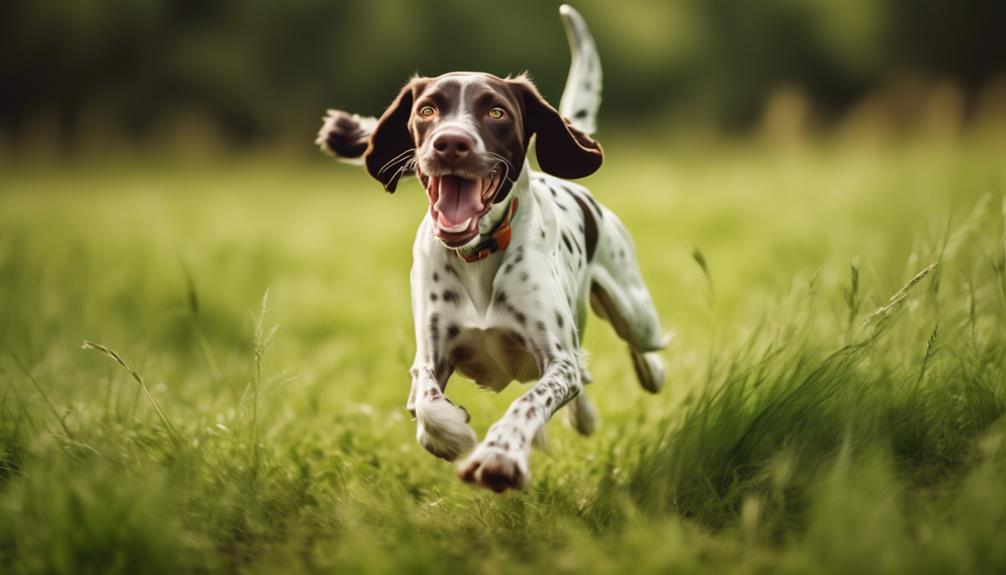
To ensure the overall health and well-being of your Small Munsterlander Pointer, it’s important to meet their exercise requirements. Regular physical activity is essential for this breed to stay happy and healthy. Aim for at least 60 minutes of exercise every day, which can include walks, runs, or playtime in a secure, fenced-in area.
Engage in activities that challenge their minds as well, such as puzzle toys or training sessions. Consider participating in activities like agility or obedience trials, as they provide mental stimulation and physical exercise.
Meeting these exercise requirements will help prevent boredom and destructive behavior in your Small Munsterlander Pointer. Plus, it will strengthen the bond between you and provide an outlet for their energy. Remember, a tired dog is a happy dog!
Training and Intelligence
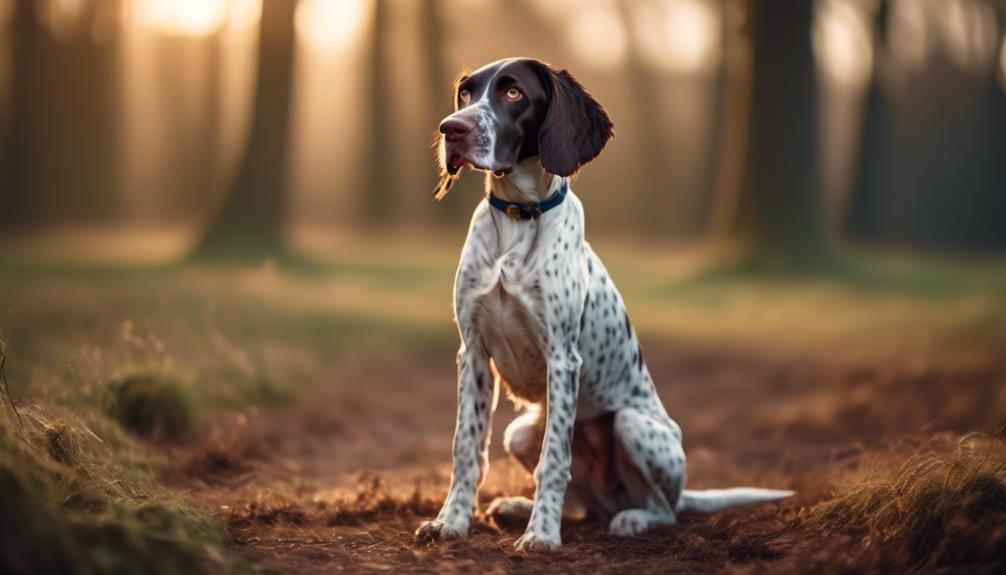
Training and intelligence play crucial roles in shaping a dog’s behavior and overall development.
Small Munsterlander Pointers are known for their intelligence and trainability, making them a great choice for owners looking for a highly trainable dog. These dogs are quick learners and thrive on mental stimulation. They excel in various dog sports and activities such as obedience, agility, and tracking.
Consistent and positive reinforcement training methods work best with this breed, as they respond well to praise and rewards. It’s important to start training early and be patient and consistent with your Small Munsterlander Pointer to ensure they grow into well-behaved and obedient companions.
With proper training and socialization, these intelligent dogs can become well-rounded and well-behaved members of your family.
Grooming Needs
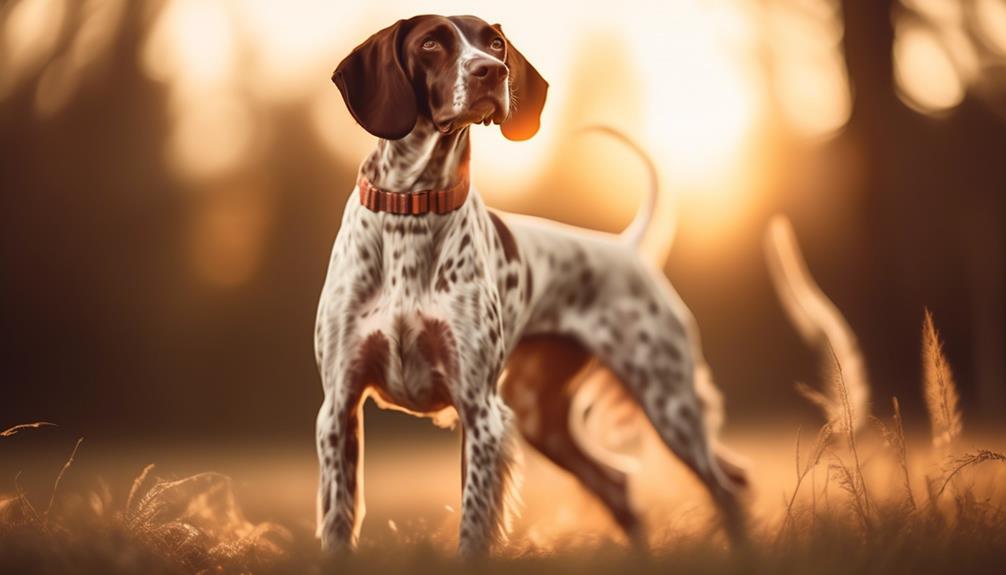
Now let’s shift our focus to the grooming needs of Small Munsterlander Pointers. When it comes to keeping your Small Munsterlander Pointer looking their best, here are a few things to keep in mind:
- Coat care:
- The Small Munsterlander Pointer has a dense, medium-length coat that requires regular brushing to prevent matting and keep it looking neat and tidy.
- They’re moderate shedders, so be prepared to brush them at least once a week to remove loose hair and keep their coat healthy.
- Bathing:
- It’s recommended to bathe your Small Munsterlander Pointer as needed, typically every 2-3 months, or when they start to smell or get dirty.
- Use a dog-specific shampoo to avoid drying out their skin and coat.
- Don’t forget to trim their nails regularly and clean their ears to prevent infections.
Health and Lifespan
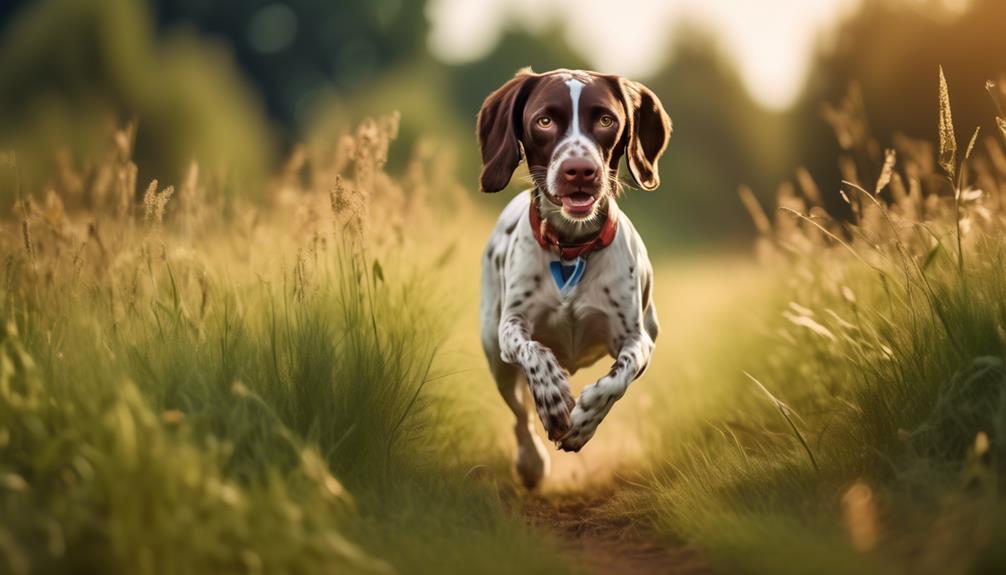
Small Munsterlander Pointers are generally a healthy and long-lived breed. They have an average lifespan of 12 to 14 years. Like all dogs, they may be prone to certain health issues, but overall they are considered to be a robust and sturdy breed.
Common health concerns for Small Munsterlander Pointers include hip dysplasia, eye problems such as progressive retinal atrophy, and ear infections. Regular veterinary check-ups, a balanced diet, and plenty of exercise are important for maintaining their overall health and well-being.
It’s also recommended to provide them with proper dental care, such as regular teeth brushing, to prevent dental problems.
With proper care and attention, Small Munsterlander Pointers can live a long and healthy life as your loyal and loving companion.
Socialization and Interaction
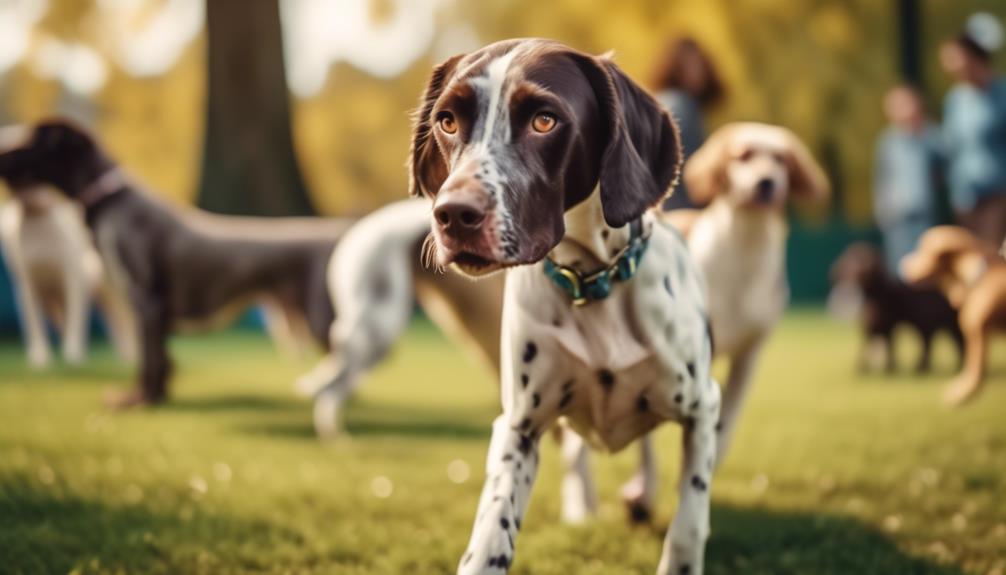
To ensure a well-rounded and friendly dog, socialization and regular interaction with people and other animals is essential for Small Munsterlander Pointers. Here are some key points to consider:
- Benefits of socialization:
- Helps your dog develop good manners and behavior around others.
- Reduces the risk of fear or aggression towards unfamiliar people or animals.
- Enhances your dog’s ability to adapt to new environments and situations.
- Tips for socialization and interaction:
- Expose your dog to different people, including children, adults, and strangers.
- Arrange playdates with other well-behaved dogs to encourage positive social interactions.
- Gradually introduce your dog to various environments, sounds, and experiences.
- Use positive reinforcement techniques, such as treats and praise, to reward your dog’s good behavior during socialization.
Small Munsterlander Pointer Size
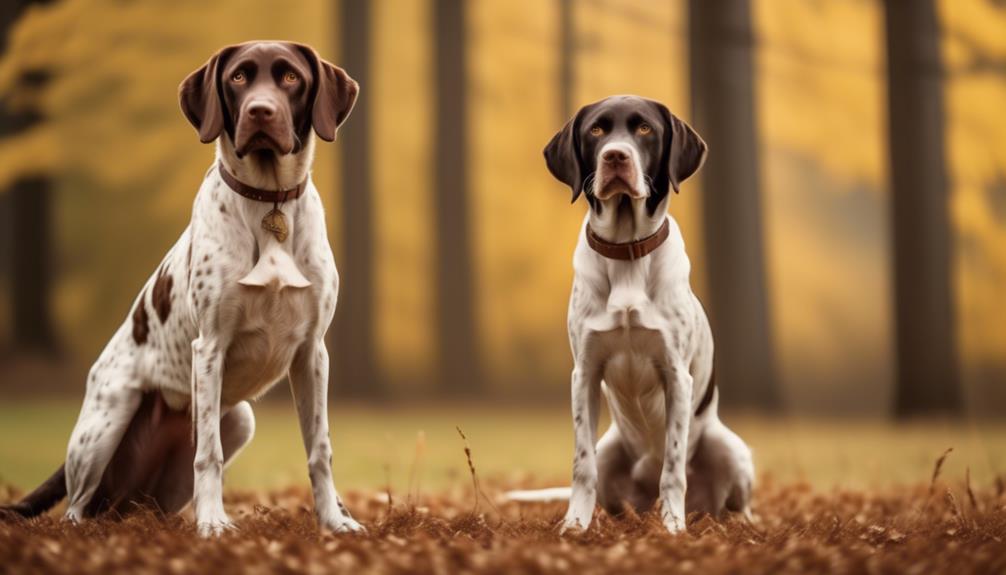
When considering the size of a Small Munsterlander Pointer, it’s important to understand their dimensions and physical characteristics.
This breed falls into the medium-sized category, with a muscular body and an athletic build. They’ve a well-proportioned head, expressive eyes, and medium-sized ears that hang close to the head.
Small Munsterlander Pointers also have a long, tapered tail. In terms of height, males typically stand between 21 and 23.5 inches, while females range from 19.5 to 22 inches.
As for weight, males weigh between 50 and 60 pounds, while females weigh between 40 and 50 pounds. These dimensions make the Small Munsterlander Pointer a versatile and agile breed, suitable for a variety of activities.
Temperament and Personality
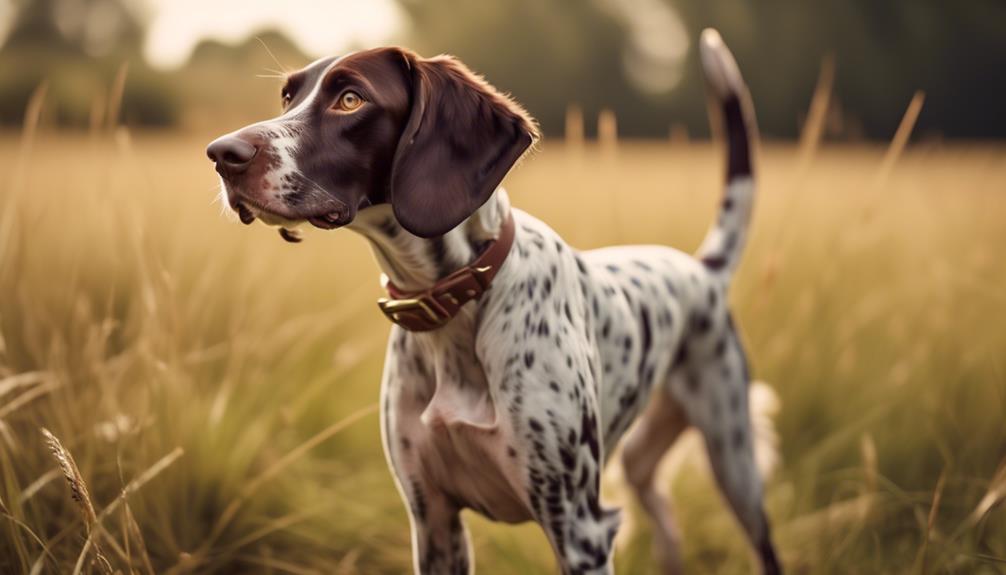
Moving on to the temperament and personality of the Small Munsterlander Pointer, it’s important to understand the unique traits and characteristics that make this breed a wonderful companion. Here are some key points to know:
- Friendly and sociable: Small Munsterlanders are known for their friendly and sociable nature. They get along well with people of all ages, including children, and are generally welcoming to strangers.
- Intelligent and trainable: These dogs are highly intelligent and eager to please, making them easy to train. They excel in activities like obedience, agility, and hunting.
- Active and energetic: Small Munsterlanders have a natural drive for exercise and enjoy being active. They require regular physical and mental stimulation to keep them happy and well-behaved.
- Gentle and affectionate: Despite their active nature, Small Munsterlanders are gentle and affectionate with their families. They’re known to be loving and loyal companions, always seeking to be by their owner’s side.
History and Origin
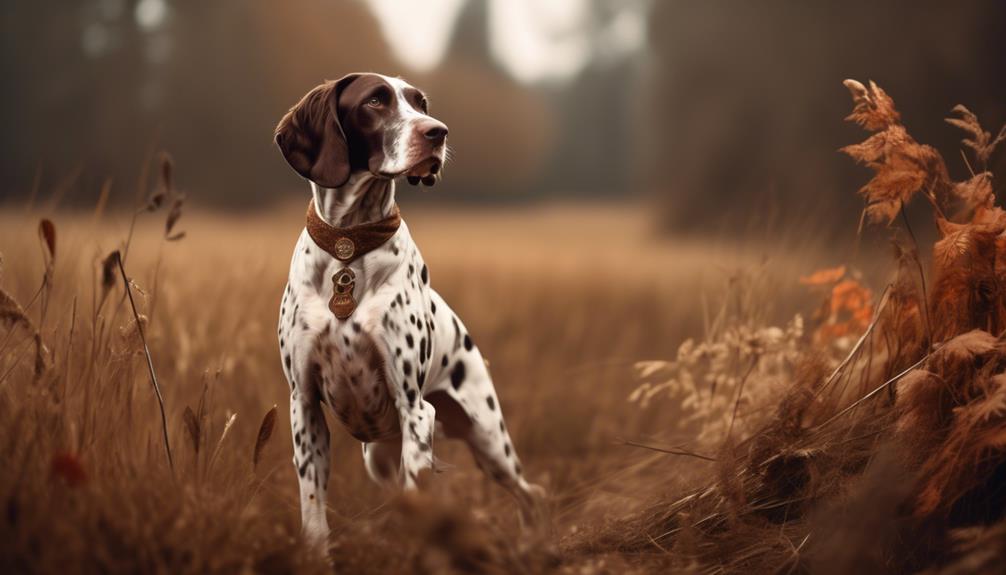
The Small Munsterlander Pointer has a rich history and a fascinating origin story. This breed originated in Germany and has been around for centuries. They were bred to be versatile hunting dogs, known for their ability to point and retrieve game.
The Small Munsterlander Pointer is believed to descend from German longhaired and small German pointers, as well as spaniels. Over time, they became popular in the Munster region of Germany, which is where they got their name. The breed’s hunting skills and excellent temperament quickly gained recognition, leading to their spread throughout Europe.
Today, the Small Munsterlander Pointer isn’t only a skilled hunting companion but also a beloved family pet. Their history and origins make them a fascinating breed with a strong connection to their hunting heritage.
Small Munsterlander Pointer Coat Colors
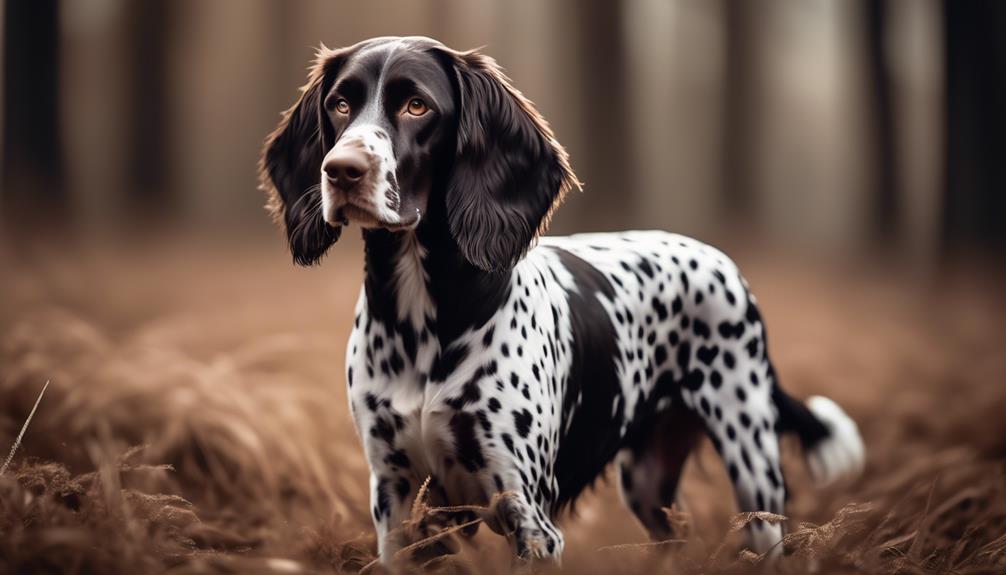
Small Munsterlander Pointers come in various coat colors, adding to the visual appeal of this versatile hunting breed. Here are the coat colors you can find in Small Munsterlander Pointers:
- Liver and White:
- Rich brown or liver-colored patches on a white background
- The liver color can range from deep chocolate to lighter shades
- Black and White:
- Black patches on a white background
- The black color can vary in intensity, from jet black to a faded black or grayish color
These coat colors give Small Munsterlander Pointers a striking appearance and make them easily distinguishable in the field. Whether you prefer the elegant contrast of liver and white or the boldness of black and white, these coat colors showcase the breed’s beauty and make them stand out among other hunting dogs.
Fun Facts About Small Munsterlander Pointers
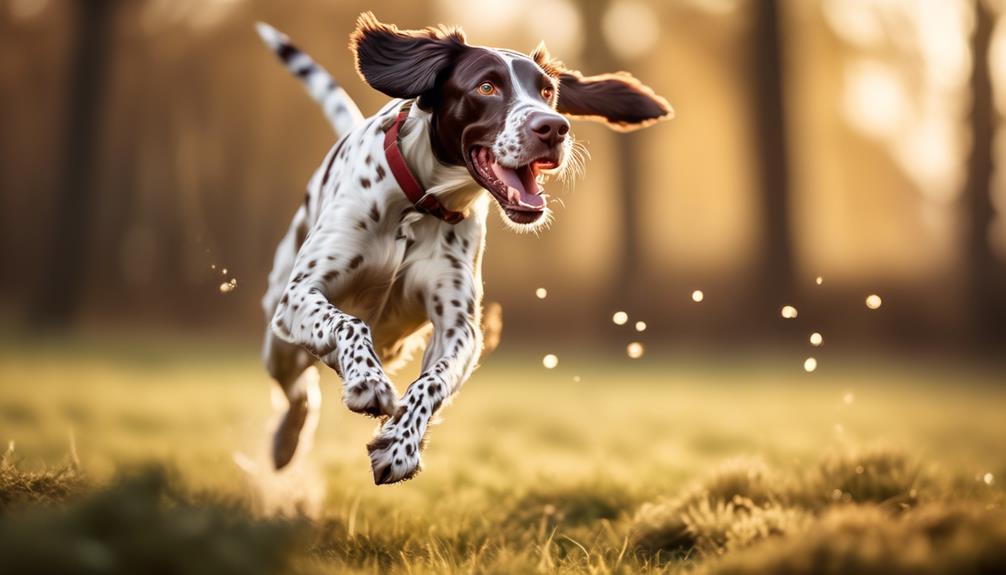
Did you know that Small Munsterlander Pointers have a rich and fascinating history as versatile hunting dogs? These dogs originated in Germany and were bred to be skilled at tracking and retrieving game. They were highly valued for their ability to work in various terrains, including water and dense woods.
Small Munsterlander Pointers are known for their exceptional sense of smell and their ability to locate game with precision. Not only are they excellent hunters, but they also make loyal and affectionate family companions. They’re intelligent and trainable, making them versatile in various activities such as obedience, agility, and search and rescue.
Small Munsterlander Pointers thrive on human companionship and are happiest when they’ve a job to do. They’re truly remarkable dogs with a fascinating history.
Frequently Asked Questions
Are Small Munsterlander Pointers Good With Children?
Yes, Small Munsterlander Pointers are generally good with children. They are known for their friendly and affectionate nature, making them great companions for kids. However, always supervise interactions between dogs and children to ensure safety.
Do Small Munsterlander Pointers Have Any Specific Health Concerns?
Small Munsterlander Pointers may have specific health concerns. Regular veterinary check-ups are important to monitor for potential issues such as hip dysplasia, eye problems, and certain genetic conditions.
How Much Exercise Do Small Munsterlander Pointers Need on a Daily Basis?
Small Munsterlander Pointers need a good amount of exercise on a daily basis. They are an athletic breed and require regular physical activity to stay happy and healthy.
Are Small Munsterlander Pointers Easy to Train?
Small Munsterlander Pointers are generally easy to train. With their intelligence and alertness, they respond well to consistent and positive reinforcement. Training sessions should be stimulating and engaging to keep them interested and focused.
Are Small Munsterlander Pointers Hypoallergenic?
No, small Munsterlander pointers are not hypoallergenic. They have a dense, medium-length coat that can shed and produce dander, which can trigger allergies in sensitive individuals. Regular grooming and cleaning can help minimize allergens.
Conclusion
In conclusion, Small Munsterlander Pointers can make wonderful apartment companions if their exercise needs are met and they display polite behavior towards neighbors.
With their medium-sized athletic build and distinctive coat patterns, they’re a sight to behold.
Their moderate energy levels make them content with indoor playtime or regular walks.
Consider the suitability of Small Munsterlander Pointers for apartment living and enjoy the joy and harmony they can bring to your living environment.




